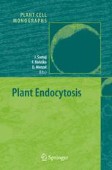Search
Search Results
-
Somatic Embryogenesis of Pine Species: From Functional Genomics to Plantation Forestry
Several economically important tree species belong to the genus Pinus and many of them form the ecological base of forest ecosystems. Pine wood is...
-
Cytological, Physiological and Biochemical Aspectsof Somatic Embryo Formation in Flax
The cytological, physiological and some biochemical aspects of somatic embryo formation in flax are discussed. From the review it is obvious that...
-
Chromatin Modifications in DNA Repair
A requirement of nuclear processes that use DNA as a substrate is the manipulation of chromatin in which the DNA is packaged. Chromatin...
-
Quality control of proteins in the mitochondrion
The quality control of proteins within mitochondria is ensured by conserved and ubiquitous ATP-dependent molecular chaperones and proteases, present...
-
The Hsp60 chaperonins from prokaryotes and eukaryotes
The Hsp60 molecular chaperones (the chaperonins) are essential proteins throughout biology. They can be separated into two evolutionary classes: the...
-
The Retinoblastoma Gene Family in Cell Cycle Regulation and Suppression of Tumorigenesis
Since its discovery in 1986, as the first tumor suppressor gene, the retinoblastoma gene (Rb) has been extensively studied. Numerous biochemical and...
-
Senescence and Cell Cycle Control
In response to various stresses, such as telomere shortening during continuous proliferation, oxidative stress, DNA damage and aberrant oncogene...
-
Systems Biology: necessary developments and trends
At the end of this definition of Systems Biology through exampling, we discuss ambitions, goals, and challenges relating to this new discipline. We...
-
Control of Cell Proliferation and Growth by Myc Proteins
Myc proteins act as signal transducers that alter cell proliferation in dependence on signals from the extracellular environment. In normal cells,...
-
Regulation of the heat shock response by heat shock transcription factors
The heat shock response is characterized by a rapid and robust increase in heat shock proteins upon exposure to protein-damaging stresses. This...
-
Template-induced protein misfolding underlying prion diseases
Proteins with prion properties are closely associated to a class of fatal neurodegenerative illnesses in mammals and to the emergence and propagation...
-
Methods and Molecular Tools for Studying Endocytosis in Plants---an Overview
Proteins of the endocytosis machinery in plants, such as clathrin and adaptor proteins, were isolated and characterized using combinations of...
-
Storage Proteins and Peroxidase Activity During Zygotic and Somatic Embryogenesis of Firs (Abies sp.)
Somatic embryogenesis was initiated from immature embryos of Abies concolor (Gord. et Glend), A. numidica De Lann. and A. cilicica Carr., A....
-
Genomic and Molecular Analyses of Transporters in the Male Gametophyte
The major events of male reproductive development and function have been known for years, but the molecular and cellular bases of these processes...
-
Tip Growth and Endocytosis in Fungi
Recent advances in molecular cell biology have provided new insights into different cellular processes that all turn out to contribute to...
-
The human Werner Syndrome as a model system for aging
The aging process is one of the most challenging biological pathways to understand. Applications of model systems for aging have contributed...
-
The Material-Independent Signatures of Life.Forensic Tools of Astrobiology
Biological life is intimately related to the geochemical conditions on Earth and is fit for this planet’s energy flux. It has often been suggested...
-
The Early History of Bio-Information
In a general sense, the information level of a structure equals the minimum number of instructions needed to specify the structure (Orgel 1973). The...
-
Assembling the Early Puzzle of Life
So far no theory, no approach, no set of formulas, and no blackboard scheme have been found satisfactory in explaining the origin of life. The...
-
The Early History of Bioenergy
Energy is most commonly defined as the potential to do work. The maintenance of the living state requires a constant flow of energy through the...
